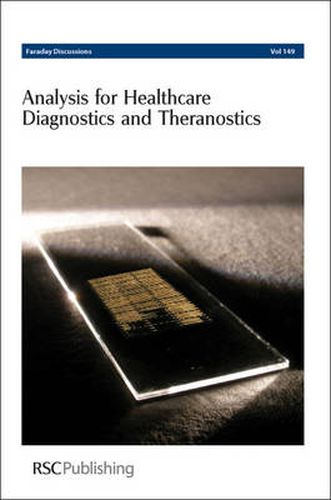Readings Newsletter
Become a Readings Member to make your shopping experience even easier.
Sign in or sign up for free!
You’re not far away from qualifying for FREE standard shipping within Australia
You’ve qualified for FREE standard shipping within Australia
The cart is loading…






The need in healthcare to detect biomolecular species such as proteins, oligonucleotides (DNA and RNA) and cells for diagnostics is driving the current development of physical techniques. The development is generally based on optical, electrochemical and mass spectrometric transduction to enable these measurements. These are now also being exploited in array formats, enabling the development of high throughput detection to inform systems biology and pathway medicine by giving new insights into biomolecular pathways and the identification of new target analytes. This is a highly topical and exciting area which opens up the real prospect of theranostics (the use of diagnostics in informing patient specific therapy), but for which development and optimisation of detection requires an understanding and control of the fundamental physical processes occurring both in sensing and in signal transduction and the comparatives merits of alternative detection strategies. For high throughput detection, bioinformatics (the processing and interpretation of vast amounts of data) also presents a real challenge. Faraday Discussion 149 is organised by the Faraday Division in association with the Analytical Division.
$9.00 standard shipping within Australia
FREE standard shipping within Australia for orders over $100.00
Express & International shipping calculated at checkout
The need in healthcare to detect biomolecular species such as proteins, oligonucleotides (DNA and RNA) and cells for diagnostics is driving the current development of physical techniques. The development is generally based on optical, electrochemical and mass spectrometric transduction to enable these measurements. These are now also being exploited in array formats, enabling the development of high throughput detection to inform systems biology and pathway medicine by giving new insights into biomolecular pathways and the identification of new target analytes. This is a highly topical and exciting area which opens up the real prospect of theranostics (the use of diagnostics in informing patient specific therapy), but for which development and optimisation of detection requires an understanding and control of the fundamental physical processes occurring both in sensing and in signal transduction and the comparatives merits of alternative detection strategies. For high throughput detection, bioinformatics (the processing and interpretation of vast amounts of data) also presents a real challenge. Faraday Discussion 149 is organised by the Faraday Division in association with the Analytical Division.